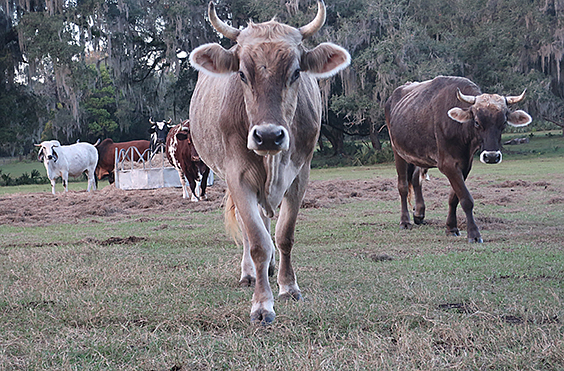- ISCOWP E-newsletters
YOU completed the $50,000 Matching Gift Challenge early! Thank you so much! Together, we are protecting cows and spreading the kno...

Vegetarians may think they are morally and ethically doing well by not eating meat. It is true that by not eating their fellow animal sisters and brothers, they are doing good for the animal species, the planet, and humankind. However, if they purchase commercial dairy, they support the meat industry. How is this possible? We have previously mentioned in the ISCOWP News how the dairy industry is explicitly connected and intertwined with the meat industry. People often don’t quite believe us when we explain the relationship.
Recently, we came across a July 3rd article on dairyherd.com titled “New Beef-on-Dairy Feedlot Set to be One of the Largest in Country.” The largest cattle feed yard north of the Rio Grande is under construction in Nebraska. When complete, Blackshirt Feeders near Haigler in the far southwest corner of the state will have a capacity of 150,000 head, all standing on a concrete pad covering a full square mile, replete with an accompanying biodigester.
None of that previous paragraph defies logic, provided you know the track record of the principals involved and understand the growing beef-on-dairy (BxD) phenomenon that has captured the attention of stakeholders throughout the chain — feedyards, dairies, backgrounders, seedstock providers, feed companies and packers. In short, the BxD segment has provided a new profit opportunity for cattle feeders and seedstock suppliers, a lifeline for some dairies, and promises to revolutionize the way the beef industry accepts, captures and uses animal ID and the data it provides.”
Dairies profit from selling milk from their healthy, reproducing female cows. But in order for a cow to produce milk, they must reproduce another cow. About half the time, the cow produces a male bovine who can not produce milk. So, the dairy has unproductive males and cows who can not produce milk for one reason or another. The dairy must make a profit to stay in business, and to make a profit, the dairy must eliminate the unproductive cows. Who wants an unproductive cow? The meat industry is the biggest buyer of unproductive cows from dairies. As long as the meat industry exists, the dairies can expect them to be knocking on their door for cow bodies. As long as dairies exist, the meat industry knows it will have a supply of cow meat.
“The BxD production model offers a unique opportunity for innovators to utilize every available tool and management practice to foster improvement. Specifically, this new model links the semen provider to the dairy to the feedyard in what is called a closed-loop system.
“We’ve long dreamed about this type of system,” says Lee Leachman, CEO of Leachman Cattle, now part of the URUS group of companies. “We supply the semen, and Alta or Genex distributes it to a dairy, then the dairy signs a contract with GK Jim Farms to sell those calves either as day-olds or after a growing period, then they are shipped to the feedlot for finishing.”

The contracts stipulate that every calf is tracked from birth with sire, health and performance data. That information is used to determine future matings to improve performance and reduce undesirable characteristics.
“This is a game changer,” Leachman emphasizes. “This enables progress like what we’ve seen in poultry and swine. If you don’t have the loop with the data you can’t make the progress.”
The closed-loop system is already operational at several U.S. feedlots, including five operated by GK Jim Farms in Colorado and Texas.”